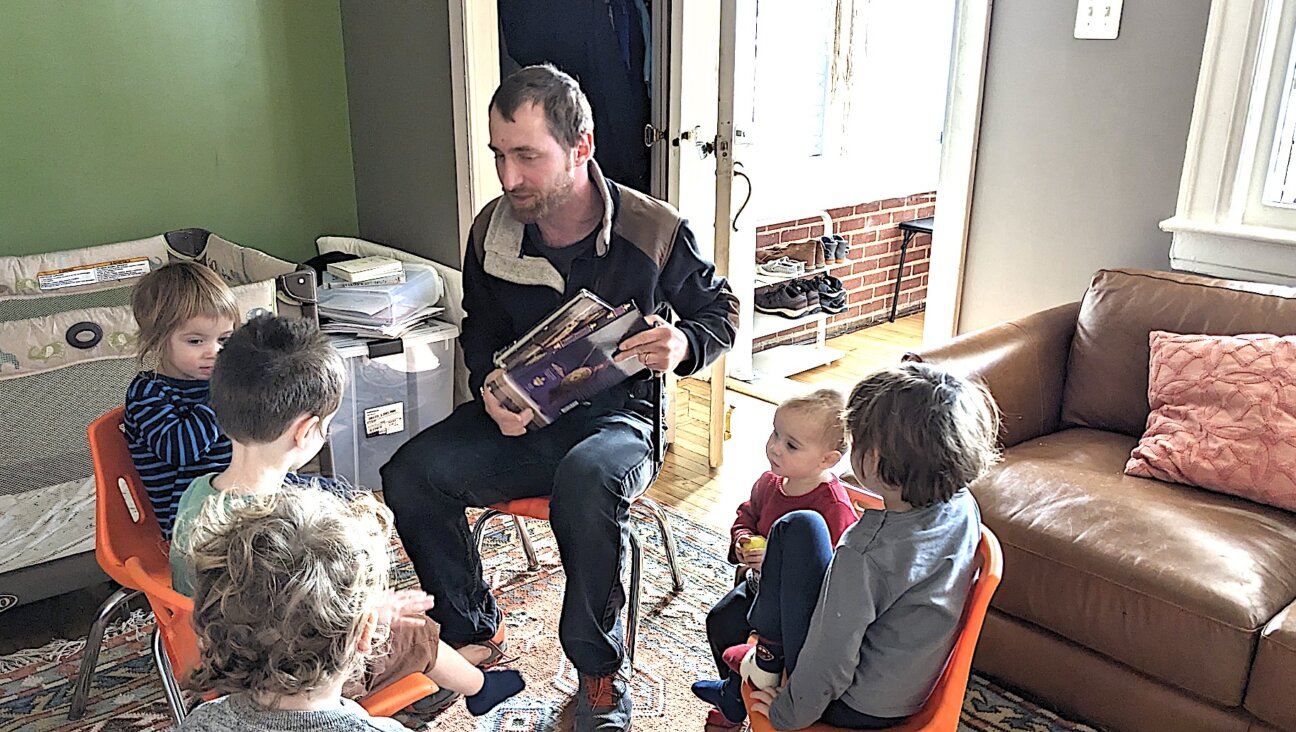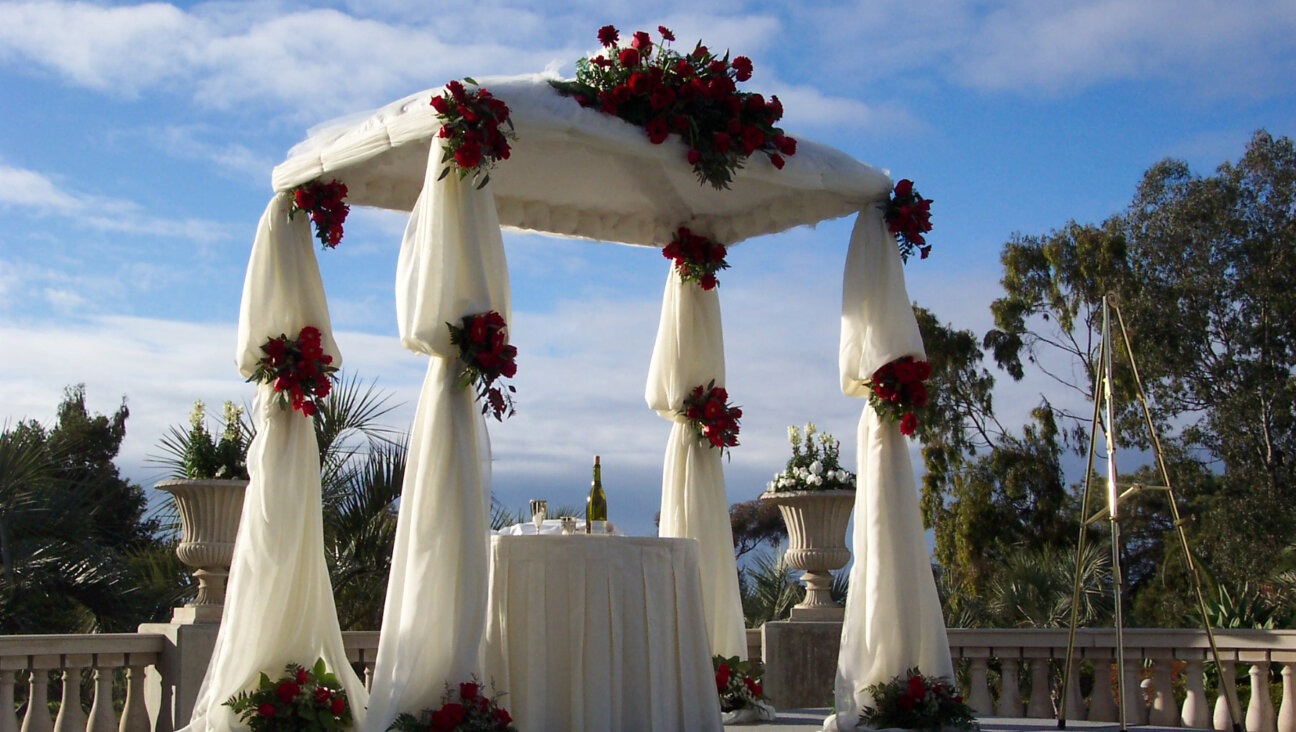Uniting Jewish Heritage Sites Across Czech Republic

Well Off the Tourist Track: Synagogues like the one shown above in Brandýs nad Labem-Stará Boleslav are part of what amounts to a multi-venue Jewish museum that stretches across the nation. Image by Ruth Ellen Gruber
No Jews have lived in this nondescript little town 80 miles southeast of Prague since the Holocaust, but driving in, you can’t miss the synagogue.
Rose-pink and ochre, with fanciful arched windows and a central peaked roof flanked by two squat towers, it rises dramatically over the rooftops, dominating the otherwise drab surroundings.
Inside, chandeliers glow above cream-colored walls and graceful arched galleries.
Though built in the 1850s, the synagogue looks brand-new — and in some ways it is. Derelict for decades, it has been painstakingly restored, inside and out, over the past few years.
This summer it was opened to the public as part of one of the most ambitious Jewish heritage revitalization projects in Europe — the Czech 10 Stars.
Carried out by the Federation of Czech Jewish Communities and financed by an approximately $14 million grant from the European Union, with further funding from the Czech Culture Ministry, the 10 Stars project links newly restored historic synagogues and other Jewish buildings in 10 towns, cities and villages widely scattered over all parts of the country.
Each site hosts a permanent exhibit focusing on one specific aspect of Jewish history, culture, religious life or traditions. There is space for concerts and other cultural events, and in several places Jewish cemeteries dating back centuries (and even a couple of mikvehs) lie within an easy walk.
“The sites were chosen for their local importance,” Tomas Kraus, secretary general of the Federation, which owns the buildings, told me. “Each had to have something special, an added value.”
It all forms a network of regional Jewish cultural centers — a 10 Stars constellation, if you will — that creates what amounts to a multi-venue Jewish museum that stretches nationwide.
“The idea is that if you visit one of the sites, even by chance, you will realize that there are nine other parts of the exhibition, so you will want to visit them, too,” Kraus told me.
Mostly well off the usual tourist track, the 10 Stars sites include Úštěk, Jičín and Brandýs nad Labem-Stará Boleslav to the north; Plzeň and Březnice to the west; Nová Cerekev and Polná in the south-central area; and Boskovice, Mikulov and Krnov to the east.
In four rushed days in July, I crisscrossed the country trying to see as many of them as I could, racking up hundreds of miles on my car and managing to get to seven of the 10.
The synagogues, dating from the 16th to the 19th centuries, have been restored as closely as possible to their pre-World War II state, which means in most cases to breath-taking splendor. Some even had to be re-restored to correct faulty renovations done in the past.
“Our goal was to bring the buildings back to how they were,” project director Jan Kindermann said.
“We worked from old photographs and the restorers made studies to determine original decorations and colors,” he said. “We restored things where we found something; but if we found nothing, we rebuilt.”
In Mikulov, on the border with Austria, for example, where a restoration from 1977–1989 destroyed many of the synagogue’s fixtures and ornamentation, experts recovered the original wall and ceiling paintings and installed a replica of the ornate baroque ark. Replica Arks were also installed in Polná, Krnov and Brandýs nad Labem.
The thematic exhibits generally relate directly to the sites themselves. In Boskovice, which has one of the largest and best-preserved old Jewish quarters in central Europe, the exhibit — housed in the 17th-century synagogue and the former Jewish school — focuses on Jewish ghettos and districts.
In Mikulov, long the seat of Moravian chief rabbis, the theme is the rabbinic tradition in Czech lands. In Jičín, birthplace of the 19th-century writer and critic Karl Kraus, the synagogue and Jewish school host an exhibit on Czech Jewish writers. In Polná, where a notorious blood libel case took place in 1899, the theme is anti-Semitism.
Plzeň is the only one of the 10 towns where there is an active Jewish community, and the exhibit there highlights Jewish traditions. It is not located in Plzeň’s twin-towered Great Synagogue, the second largest synagogue in Europe and a city landmark, however, but in the much smaller nearby Old Synagogue, which had long stood disused.
“Jewish history is part of the history and traditions of our city,” Plzeň Mayor Martin Baxa told me. “Our citizens know about the Great Synagogue, but not the Old Synagogue. Now the two are connected. The 10 Stars was a way to change that situation and give the Old Synagogue back to Plzeň.”
The 10 Stars project is the biggest single Jewish heritage project to be carried out in the Czech Republic since the fall of communism, but it is the culmination of a strategy for Jewish heritage preservation already implemented by the Jewish community in the early 1990s.
This included targeting specific buildings for restitution and working in partnership with local municipalities and NGOs to restore or renovate buildings for cultural use. Since 1993, more than 65 synagogues all over the country have been restored. Most are used as cultural centers, but several house regional or local Jewish museums.
On my 10 Stars road trip, I also attended Sephardic music concert by the Czech group Kon Sira in the recently restored synagogue in Český Krumlov, the beautiful southern Bohemia town that is a tourist mecca. The synagogue functions as a cultural venue and includes an informative exhibit on local Jewish history.
The 10 Stars sites were inaugurated in June with a series of official opening ceremonies, but otherwise the project has received surprisingly little fanfare.
That’s too bad. Following the 10 Stars route is an excellent way to see remarkable Jewish heritage sites and to get out of Prague and experience lesser-known parts of the country.
Be aware, however, that all the logistical kinks have not yet been worked out. Signage is poor in some places, and printed information is also scarce. For foreign visitors, though, the biggest frustration is the current lack of English translations for the information panels in the exhibits.
Not only that, rules laid down by governmental funders prohibit commercial use of the sites — that means no cafes, no museum shops and aside from a few postcards, no souvenirs.
Ruth Ellen Gruber writes frequently about Jewish cultural and heritage issues.















